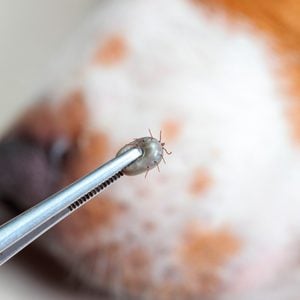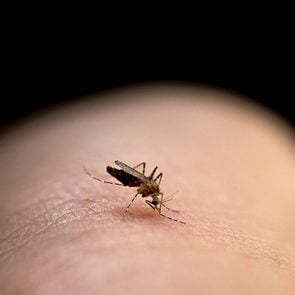Here’s What Spider Bites Look Like—and When to Call the Doctor
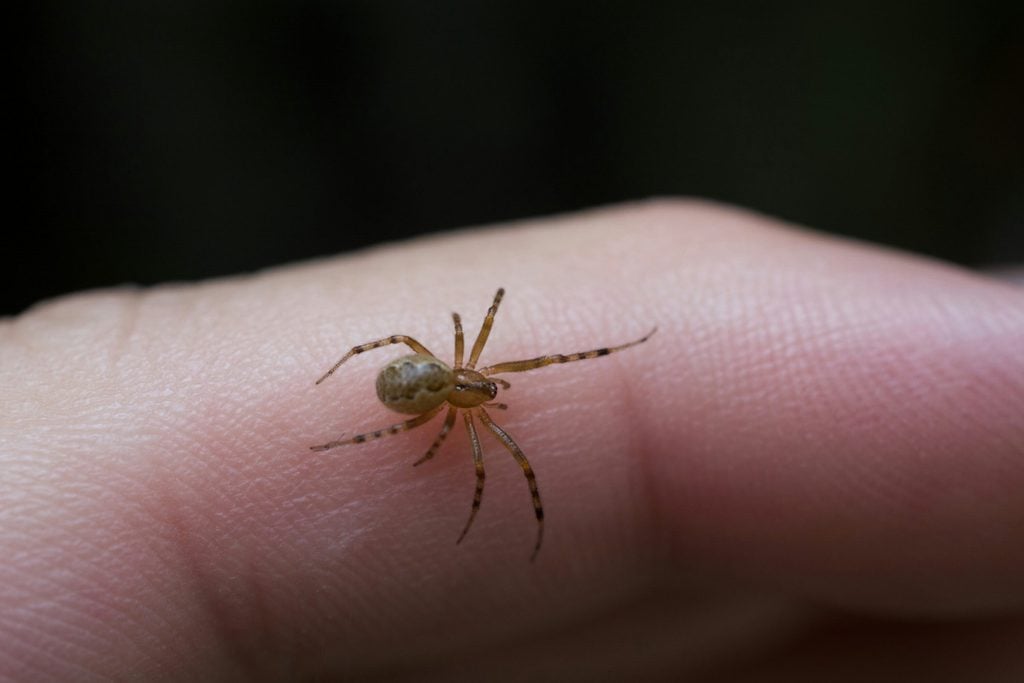
Spiders are probably more scared of you than you are of them, but if you do get bitten, here's the best course of action.
Here’s the good news: Unlike chiggers, which feast on your skin, or mosquitoes, which suck your blood, spiders (anthropods) don’t see you as food. In fact, they would rather keep their distance.
“They have no interest in dealing with people. It would be like us going up against Godzilla,” says arachnologist Rick Vetter, now retired from the University of California, Riverside, and author of The Brown Recluse Spider. Even if we do have a close encounter with spiders, they rarely bite. Here’s what entomologists want you to know about spiders and their bites.
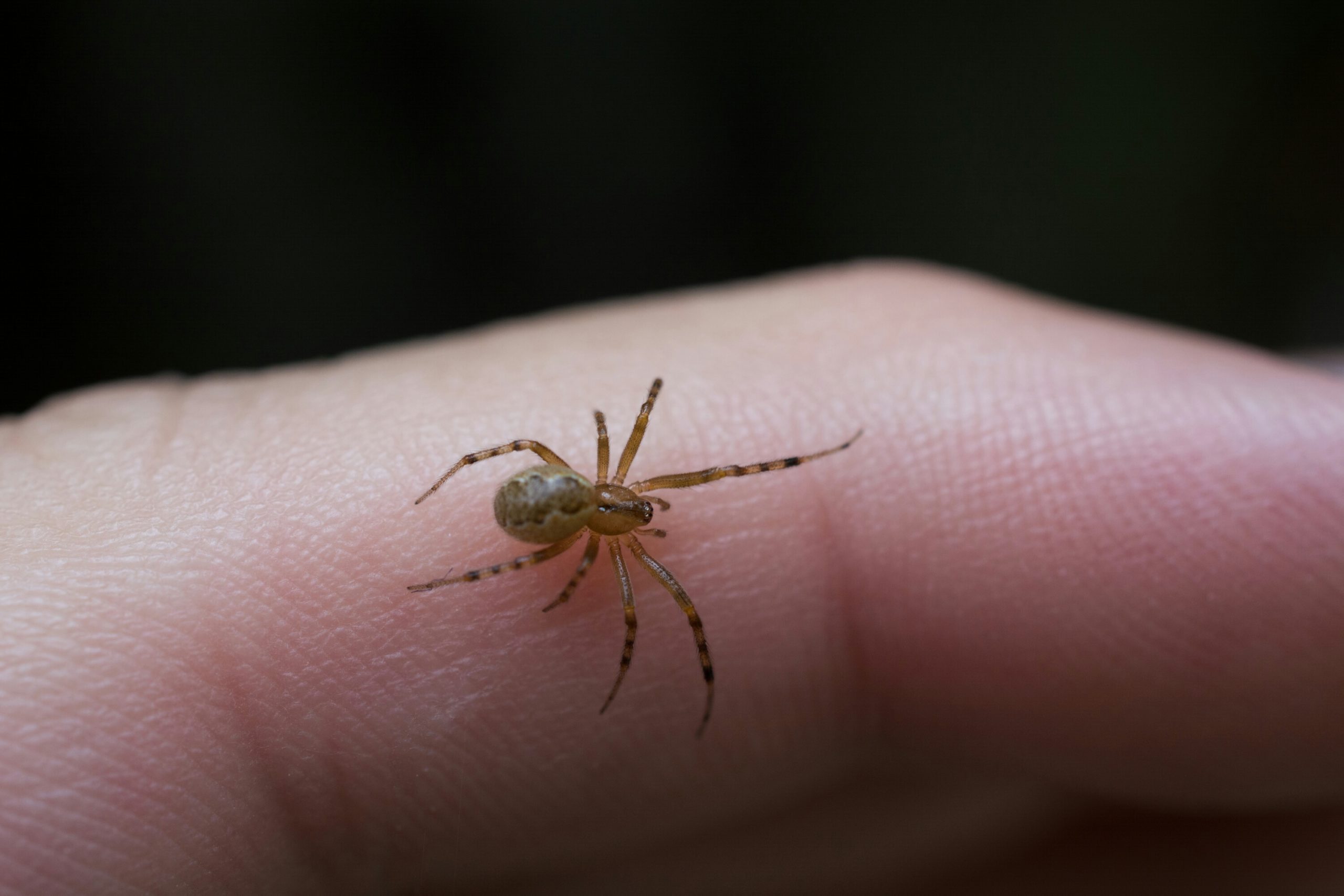
Why do spiders bite?
In a nutshell, it’s self-defense. “In general, spiders will bite only if they can’t get away from you, or are protecting their babies and don’t want to leave the babies behind, and/or they are being crushed or otherwise hurt,” says Sebastian Alejandro Echeverri, PhD, who studies spiders at the University of Pittsburgh. Even the black widow doesn’t bite as often as many people believe. A 2014 study published in Animal Behaviour tested various scenarios to find how often a black widow would bite. Even with continued poking, the black widow spiders either played dead or spit out silk instead of biting. Only one spider out of 43 actually bit the gelatin “fingers,” used for the tests. The biting increased to 60 per cent only when the spider was pinched between two gelatin fingers for an extended period.
Do spiders have dangerous venom?
“Yes, almost all species of spiders have venom, but that venom has evolved to work on animals that the spider eats. And there are no spiders in the world that eat humans,” says Echeverri. Spiders feast on insects such as mosquitoes, flies, moths, beetles and other spiders. Larger spiders might eat lizards and frogs. “Our bodies are so much larger and built so differently than the insects and other animals that spiders do eat, that the vast majority of spiders’ venom just doesn’t work on us,” says Echeverri.
Black widow and brown recluse are venomous
Each individual has his or her own unique response to spider bites. Symptoms may be minor to severe. According to CTV News, the only two spiders native to Canada that are considered venomous, are the black widow and brown recluse. The venom of the black widow contains a neurotoxin that can cause pain at the bite area that spreads to the chest, abdomen, or entire body. However, death occurs in less than one per cent of black widow bites. The brown recluse venom has the potential to destroy skin and cause a severe lesion, for which medical attention may be necessary. Death is rare from a brown recluse bite and reported mainly in children.
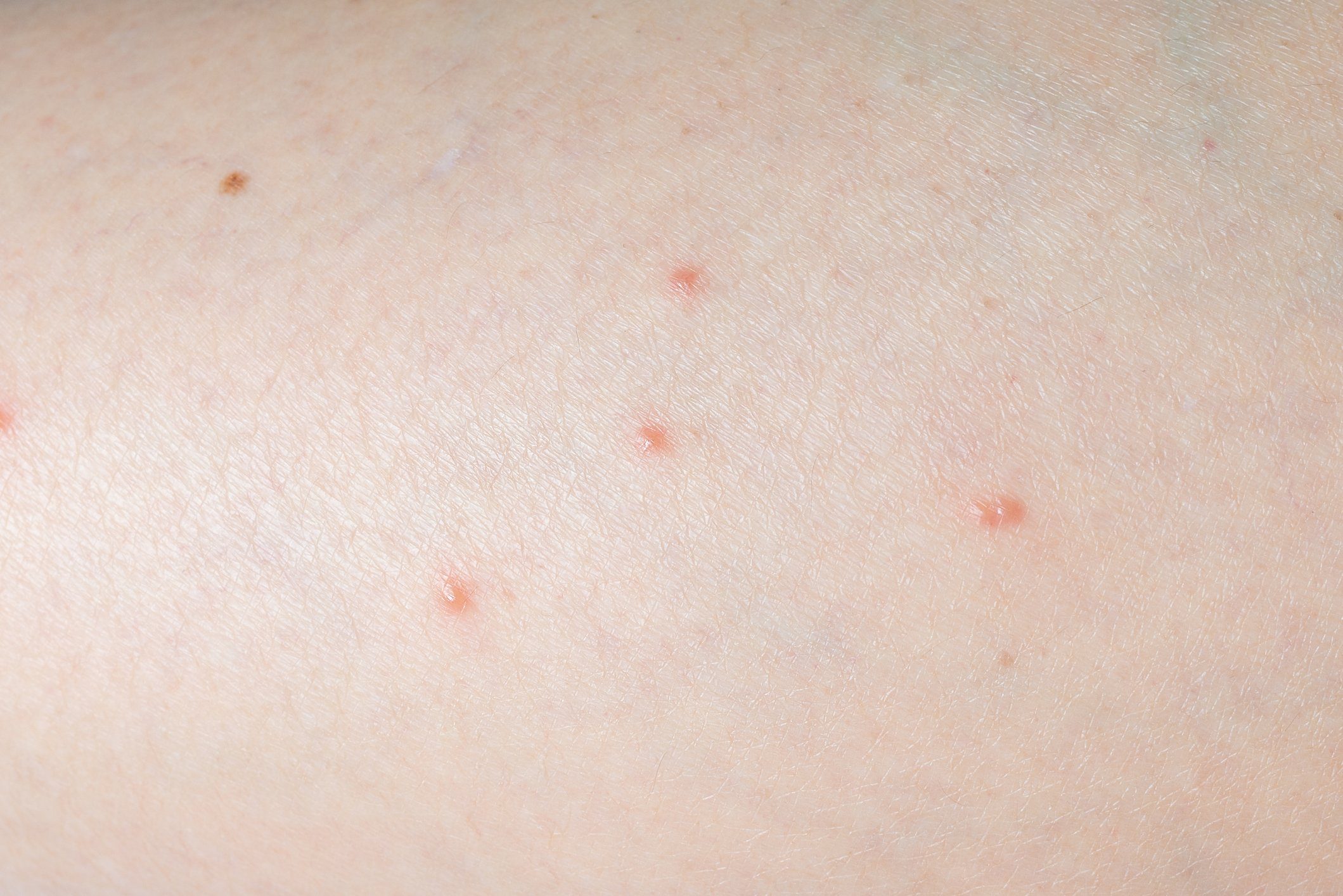
Spider bites
Unless you got a good look at what bit you, it’s difficult to know if the bite came from a spider or an insect—you might even suspect an insect that looks like a spider, such as the jumping spider cricket, which isn’t a spider and doesn’t bite. “Not all skin reactions are bites from an arthropod. You can’t 100 per cent identify what bit you based on a skin lesion. Nor can you diagnose a skin reaction and attribute it to any animal unless you see it biting you or slapped it dead,” says entomologist Jody Green, PhD, at the University of Nebraska, Lincoln. “There are so many other reasons for skin lesions besides spiders,” adds Green. (These skin signs could signal a serious health problem.)
Dermatologist Adam Friedman, MD, professor and interim chair of dermatology at The George Washington University School of Medicine and Health Sciences, says that anything short of the skin-cell death a person gets with a bite like the brown recluse’s will look the same. In other words, you might not be able to say what bit you with confidence, and red bump bug bites are rarely serious and can be treated at home.
Still, medical treatment might be necessary if your symptoms are severe or if you suspect a black widow or brown recluse bit you.
Spider bite symptoms
Remember that from one person to the next, the reaction to a spider bite can be very different. Children, the elderly, pregnant women and those with compromised immune systems might have more severe reactions. The U.S. Centers for Disease Control (CDC) lists possible symptoms of spider bites as:
- Itching or rash
- Pain radiating from the site of the bite
- Muscle pain or cramping
- Reddish to purplish colour or blister
- Increased sweating
- Difficulty breathing
- Headache
- Nausea and vomiting
- Fever
- Chills
- Anxiety or restlessness
- High blood pressure
Also, some individuals may experience anaphylactic shock, an allergic reaction to the venom. Symptoms include rash, hives, intense itching, swelling and redness, sudden swelling of the lips, eyes, tongue, or throat, stomach cramps, trouble breathing or wheezing, or loss of consciousness.
Spider bite treatments
In general, all spider bites are treated the same way, Dr. Friedman says. Here are the steps to treating a spider bite at home:
- Clean the bite with mild soap and warm water
- Apply ointment based moisturizer to damp skin and keep covered with an adhesive bandage if possible
- Take acetaminophen or ibuprofen (so long as not contraindicated) if you have pain
- Apply ice briefly or hydrocortisone one per cent cream if you have itching
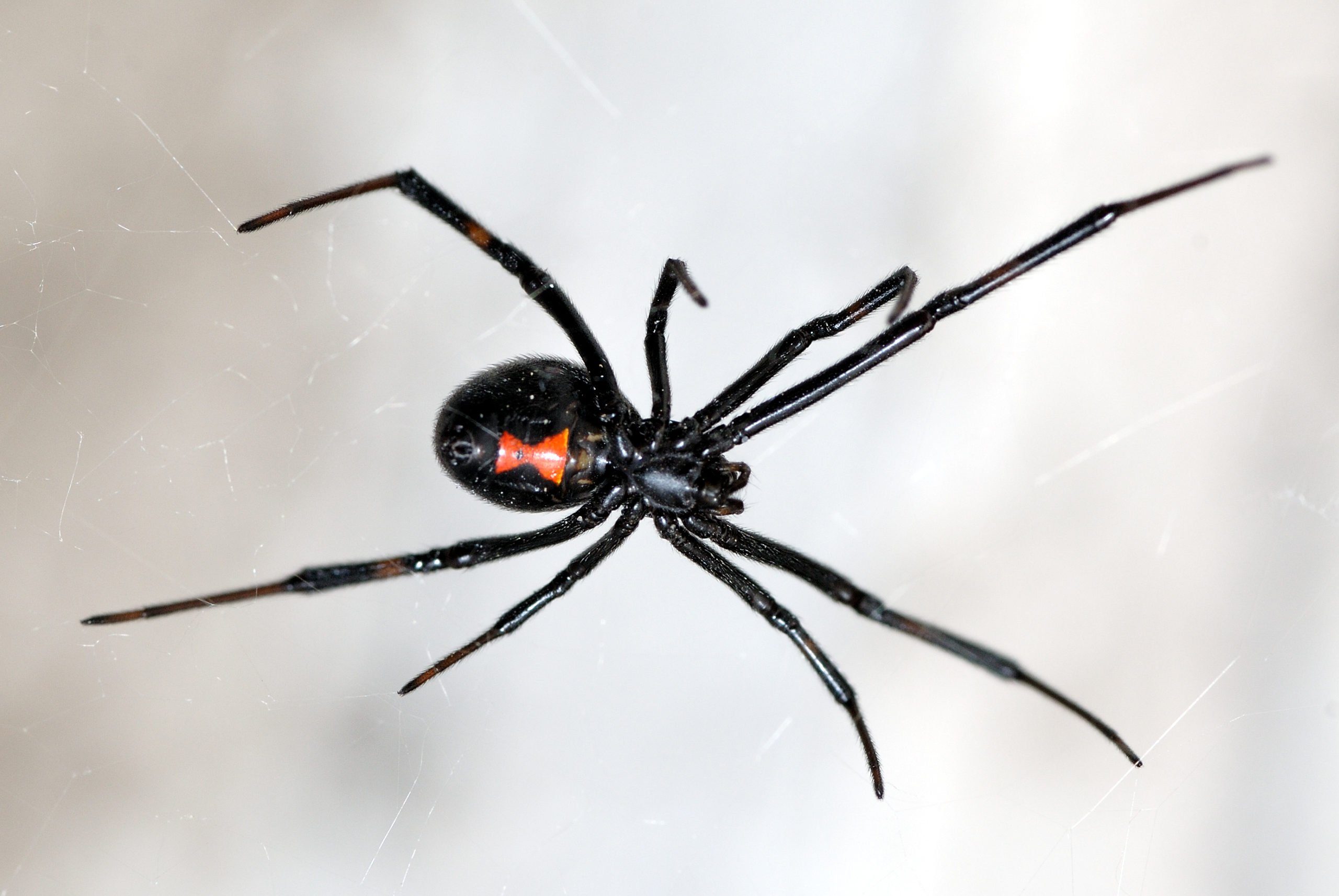
Black widow
As its name implies, this spider is a shiny black colour with a feature unlike any other—a red hourglass marking on the underside of the females’ abdomen. They’re about 2.5 to 4 centimetres (1 to 1.5 inches) in size. Males have light streaks on their abdomen and are smaller. More importantly, it is the larger female that has the bite that’s so infamous. They live primarily in the temperate regions of southern Canada and shun humans if possible. They are content to mind their own business, eating mosquitoes, flies, and other pests we don’t like, all while living quietly outside, close to the ground in garages, rock piles, beneath decks and porches. It’s highly unlikely to see one in your house unless it accidentally hitchhiked in on another object.
Black Widow bite symptoms
You might not even notice when a black widow bites you, or it may just feel like a pinprick—that’s why it’s so challenging to know what bit you. “The bite will appear at first to be a small red bump with surrounding redness and swelling, almost like a hive,” says dermatologist Joesph Zahn, MD, assistant professor of dermatology at the George Washington University Medical Faculty Associates. The initial pain of the bite occurs in just a few minutes and usually subsides within two to three days.” The symptoms may be more severe, depending on how an individual reacts to the venom. In extreme cases, he says, “latrotoxins, a type of neurotoxin in the venom, can cause serious pain and can lead to paralysis.” In addition, sometimes fatal heart damage has been reported, he notes. But he stresses that death due to a black widow spider bite is extremely rare.
Treatment and when to see the doctor
A black widow bite can look like countless other insect and spider bites, but if you suspect you’ve been bitten by one, it’s best to get checked out, Dr. Zahn says. Children, pregnant women, the elderly and those with compromised immune systems should see their doctor or head to the emergency department. If you have fevers, chills, muscle pain, aches, difficulty breathing, or other symptoms that affect your entire body, call your doctor.
Dr. Friedman also suggests a tetanus shot if you haven’t had one in the last decade—tetanus spores can collect inside the bite. Your doctor may recommend prescription medications such as benzodiazepines (a sedative) to help relax your muscles (and you). Antivenin, also known as antivenom, is available for severe symptoms, yet Dr. Zahn adds that it might not work for everyone; it triggers an allergic reaction in some people. A doctor can help you determine your risk based on your health history. In Vetter’s experience, antivenin has been quite effective for extreme pain. “Bite victims including small children go from screaming pain back to normal within 30 minutes,” he says.
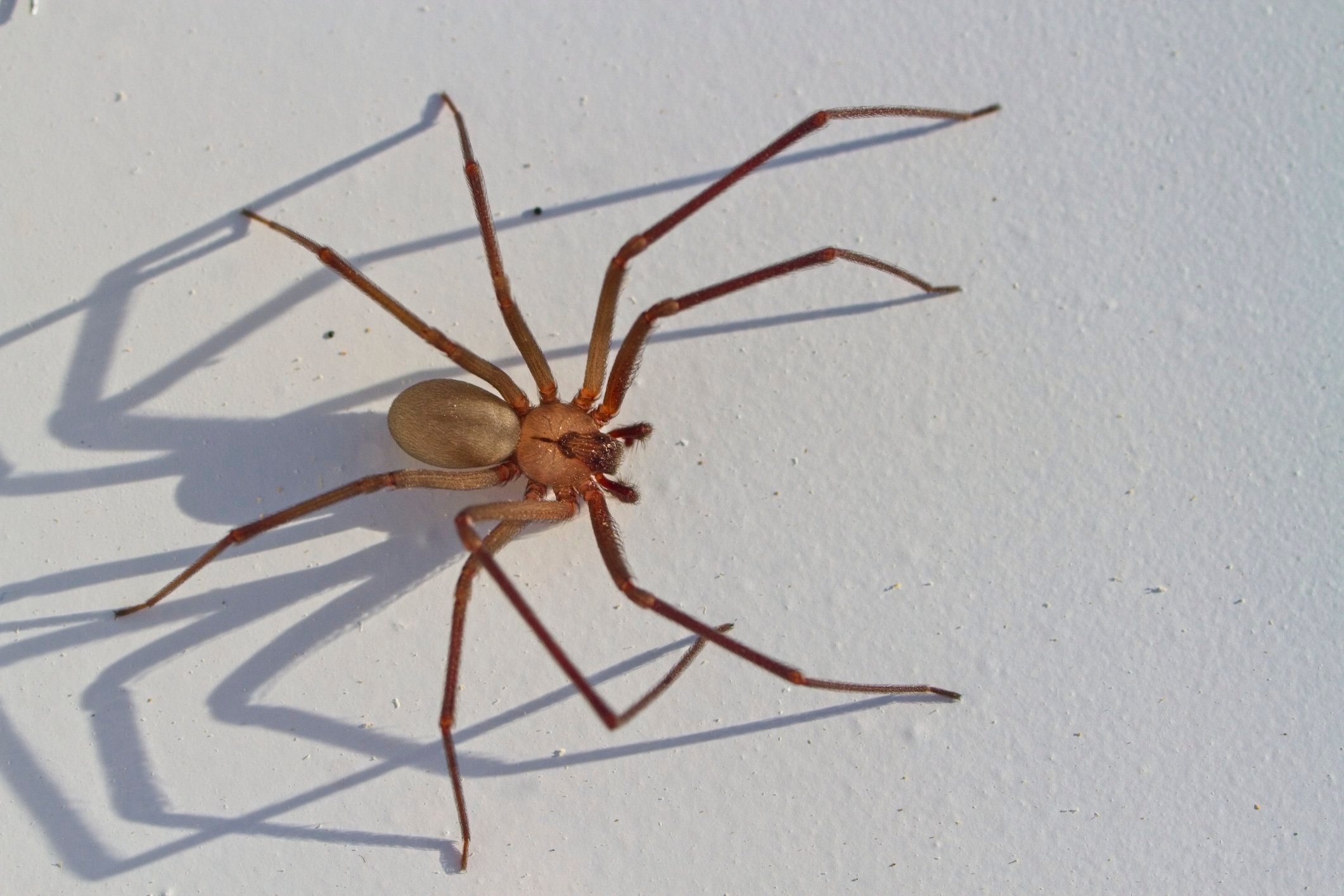
Brown recluse
Also known as the “fiddleback, ” the brown recluse is exceeding rare in Canada, and is identifiable by its dark brown violin-shaped body. And as its name implies, it prefers to live undisturbed, away from humans. Outdoors it lives under rocks, woodpiles, and debris. “They might get in the house, usually by being carried around in storage boxes or in luggage being moved around,” says Green. They hang out in places where they won’t be discovered easily, like in rarely used areas of the basement, attic, or crawl space. “Many, many spiders are misidentified as brown recluse spiders every day,” adds Green. Yet, if you ever got close enough, you would notice a difference from most other spiders. “They are one of the few spiders that have six eyes, whereas most spiders have eight,” says Vetter.
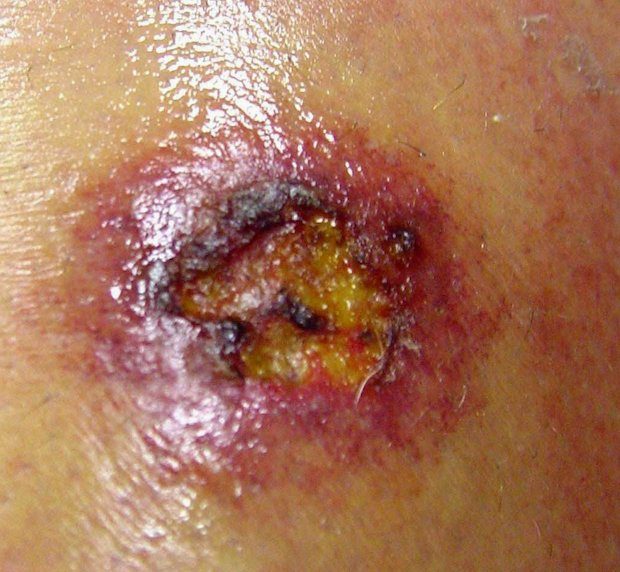
Brown recluse bite symptoms
The good news is most brown recluse bites are mild and self-healing, according to both Vetter and Dr. Friedman. The bite is usually painless— at first. “A painful, severe swollen reaction occurs within the first eight hours,” says Dr. Friedman. Some people may have mild discomfort while others will develop large blisters. “The blisters are surrounded by reddish and white zones. In about a week, the central portion becomes dark and gangrenous,” says Dr. Friedman. That reaction to the bite is known as loxoscelism. Rarely, some people develop systemic loxoscelism, in which the infection at the site spreads through the bloodstream and can be accompanied by nausea, vomiting, fever, and muscle pain In a severe case, Dr. Friedman says it causes a condition called disseminated intravascular coagulation. “This means your blood both clots too much and can’t clot enough at the same time, which is life-threatening.”
Treatment and when to see the doctor
People in the following categories should always seek immediate treatment if they suspect they’ve been bitten by a brown recluse:
- Pregnant
- A child
- Elderly
- Immune-compromised
- A chronic health condition such as diabetes or heart disease
Also, if you feel muscle pain, aches, fevers, chills, difficulty breathing, or other symptoms that affect your whole body, call your doctor. Your doctor might recommend a tetanus shot if you haven’t had a booster in the last 10 years. (These strange symptoms that could signal a serious disease.)
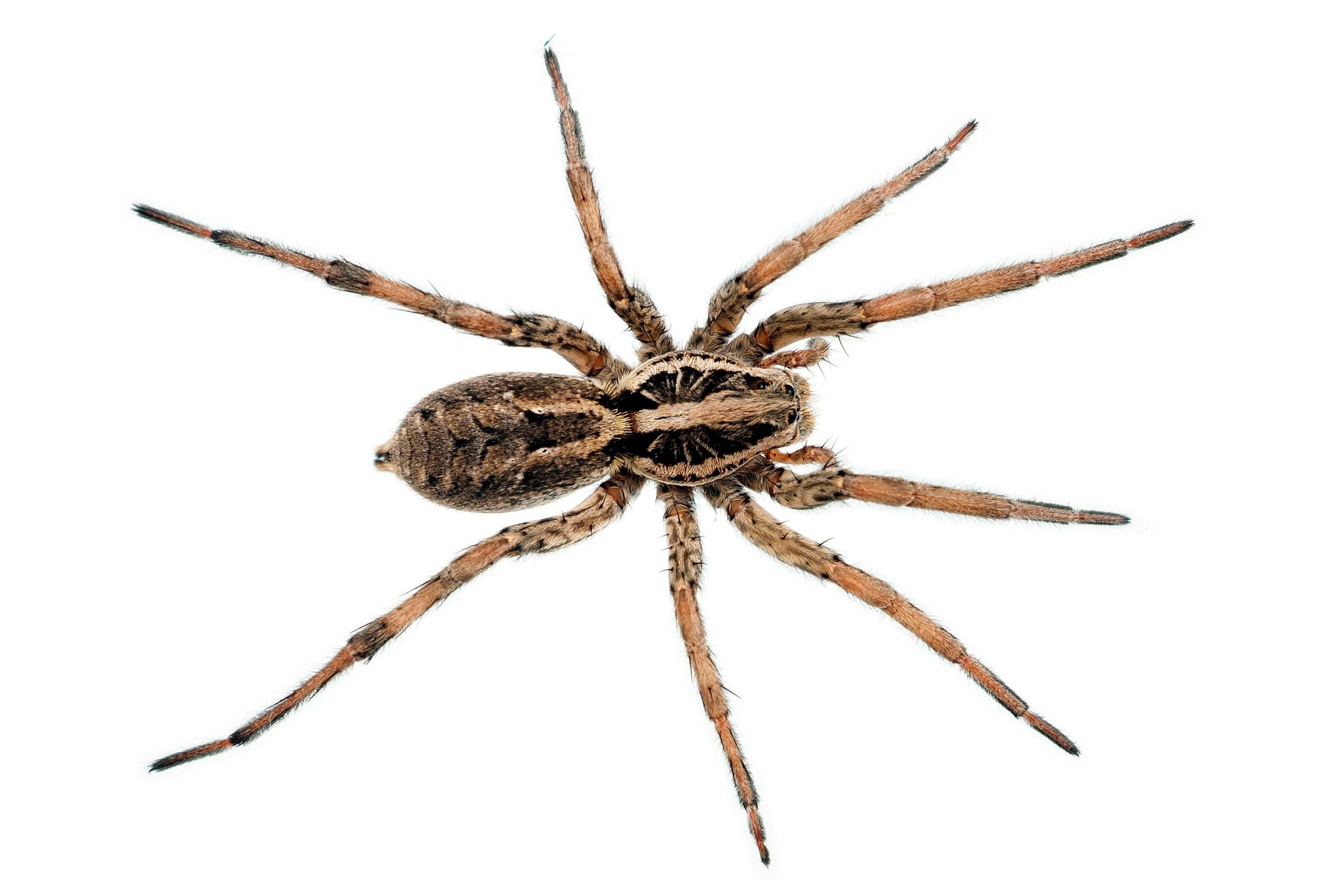
Wolf spider
Wolf spiders are hairy and larger than most common spiders, which might make them seem more creepy and dangerous, but they’re “virtually harmless,” says Vetter. They have a tan to dark brown colour and sometimes sport stripes on their body, paler in colour. Females are about 1.5 centimetres (1.3 inches) long, and males can be up to 5 centimetres (2.5 inches) long. Wolf spiders aren’t web builders. They live across Canada and favour outdoor ground habitats such as woodland leaf litter, stream edges, and they may burrow under flat rocks or fallen tree logs. Inside, depending on where you live, you might see one in your house in the fall near doors, windows, basements, or garages. They’re just looking for a warm place to hang out as temperatures drop outside. (Check out the 10 most disgusting house bugs—and the best ways to get rid of them.)
Wolf spider bite symptoms
As with any spider bite, the severity of any reaction can differ from individual to individual, but typically, wolf spider bites aren’t dangerous. “For the most part, it is localized pain, itching, and minor swelling, a red bump,” says Dr. Zahn. “You might notice the symptoms within a few minutes to a few hours after the bite.”
Treatment and when to see the doctor
“For the most part, these bites rarely pose a risk to your health. If you experience fevers, chills, muscle pain, and aches, or other symptoms throughout your body, call your doctor,” Dr. Zahn says.
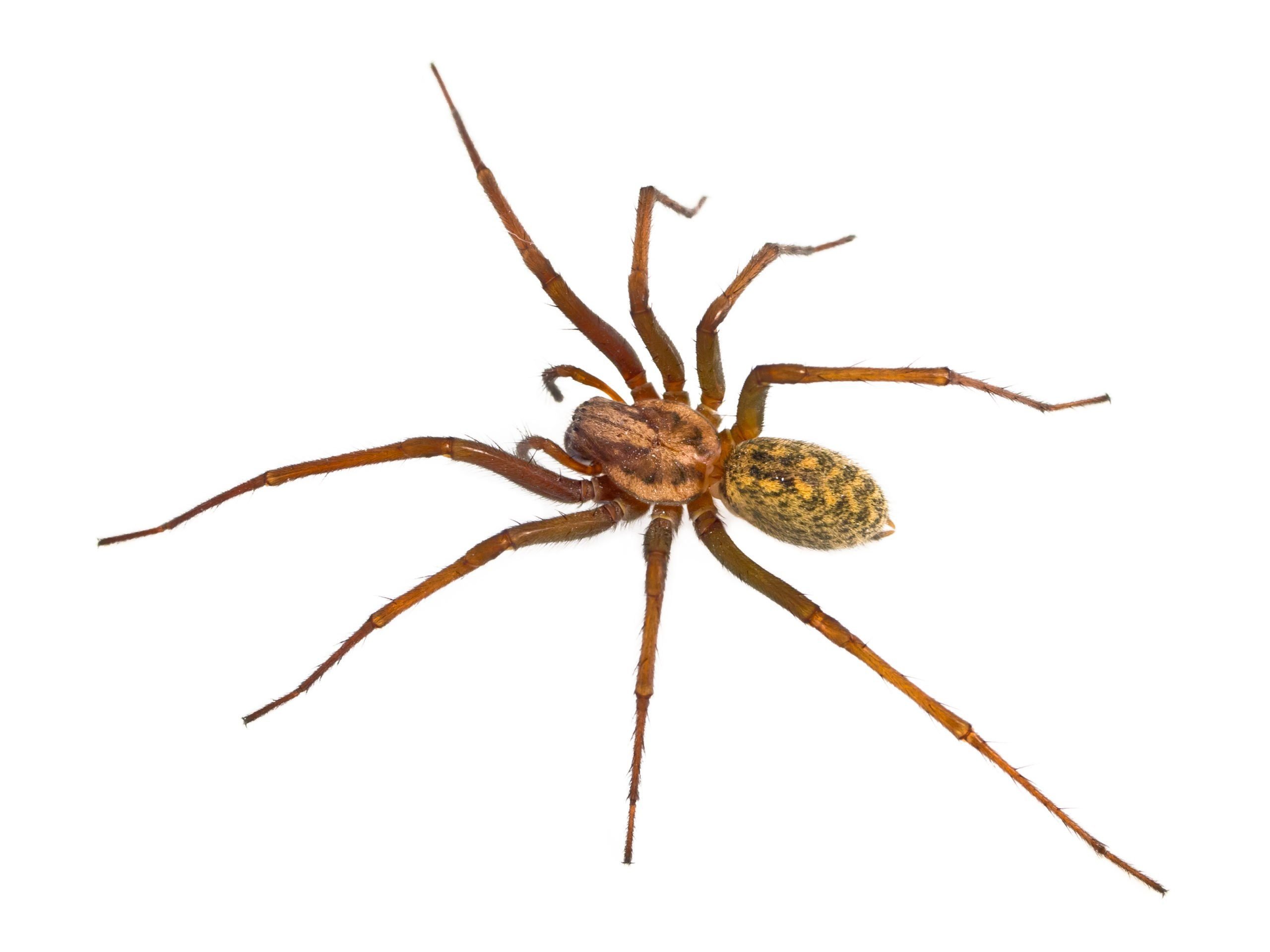
Hobo spider
You would think having eight legs would make getting around a breeze, but the hobo spider, also known as the hitchhiking spider, doesn’t climb up vertical services very well, so it likes to travel on people or other objects to get around. That’s why you might see it running across the floor, more than another type of spider. It’s about 0.5 centimetres (3/16 of an inch) long and typically a shade of brown with dark stripes or other markings, depending on the species. The hobo lives in the Pacific Northwest and favours outdoor living in the standard spider spots: Cracks and holes in woodpiles, under rocks, concrete, and window wells. If they do find themselves inside, they seek out dark and moist areas like a basement or crawl space.
Hobo spider bite symptoms
The bite of a hobo spider is barely noticeable. At most, it may feel like a pinprick. Vetter says the bite is harmless and non-toxic. The CDC removed the hobo spider from its list of venomous spiders in 2017. The bite can result in redness in the area for up to 12 hours. Since the bite is painless, it’s difficult to determine how long it might take to see a reaction, Dr. Friedman adds.
Treatment and when to see the doctor
Follow the spider bite treatment above. It’s unlikely you’ll need to see the doctor, but if you have concerns about the bite area, intense itching, pain, and swelling, call your doctor.
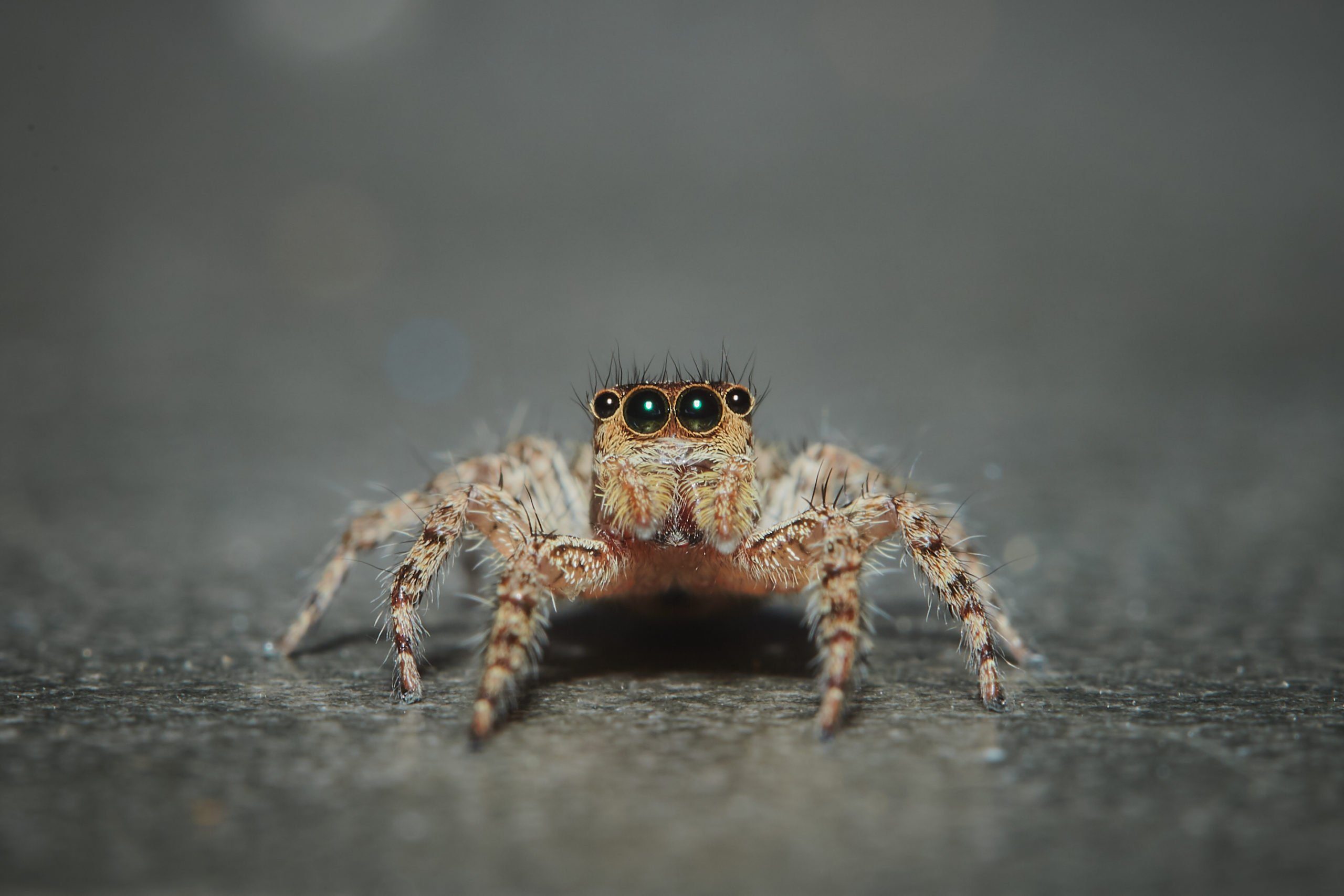
Jumping spider
Found throughout Canada, the jumping spider’s vision is comparable to humans, Vetter says. They have eight eyes in three rows. The front row has four eyes with two larger eyes in the middle. People often mistake jumping spiders for black widow spiders because they both have compact black bodies with relatively short legs. Yet jumping spiders can also be brown, tan, or gray with colourful markings in yellow, red, blue, green, and white. As their name suggests, they jump (and climb) and can be found waiting for their prey (insects) high in tree trunks or low in window wells. They’re far more likely to be outside than inside.
Jumping spider bite symptoms
If a jumping spider chomps you, you’ll see a small bump that is reddish with a bit of swelling. There may be some itching also, depending on how your body reacts to the bite.
Treatment and when to see the doctor
Follow the spider bite treatment guidelines and see your doctor if persistent itching, swelling, or pain persists.
Spider bite prevention
Spiders prefer quiet and out-of-the-way places—a corner in the basement, under storage containers in the garage, or attic. Outside, they favour life under rocks, window wells, nooks, and crannies of the shed, woodpiles, or under the porch. When they sense your presence, they scurry away. Still, avoid an unwelcome encounter and protect yourself by thinking about the areas where spiders might be living that have been relatively undisturbed by human activity, and act accordingly. Wear gloves, long sleeves, and tuck your pants into your socks if you’re working outside. Shake out the boots that have been sitting on the patio. Wash the garden gloves before you put them on. “Watch out for seasonal stuff in the garage like baseball gloves and gardening clothes that sit idle for months. Store them in large zip-closure plastic bags,” Vetter says.
Next, find out the simple hack to keep spiders out of your house.
